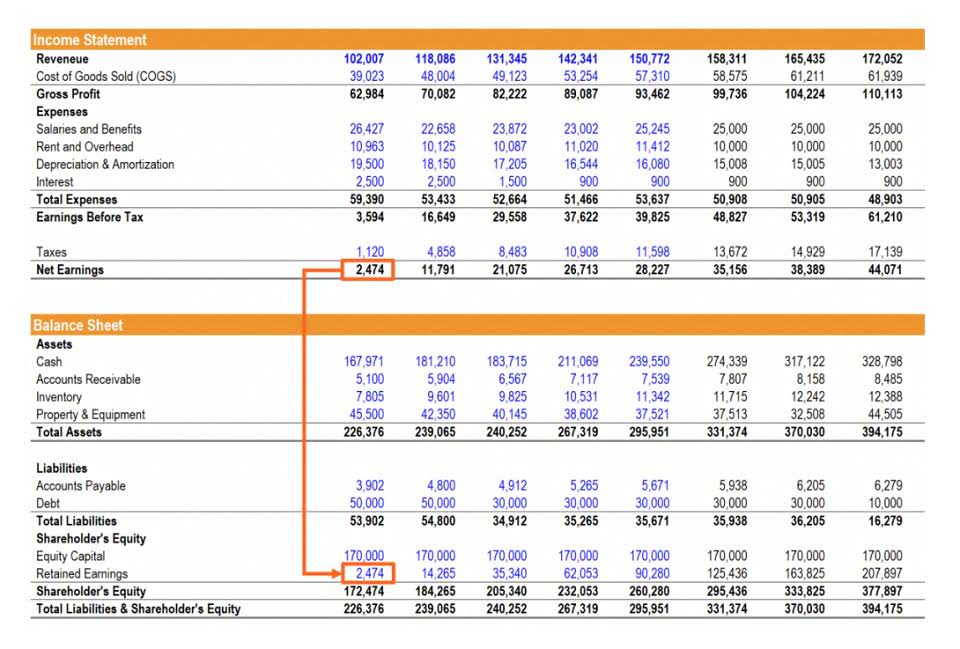
This can also be referred to as earnings before interest and taxes (EBIT). They have contrasting business models, goals, revenue sources, and risks. These differences are reflected in their financial statements, mainly on their balance sheet and income statement. Understanding these line items is important in analyzing the performance of a bank and its risk management capabilities. An income statement is a financial statement that reports the revenues and expenses of a company over a specific accounting period. A distinguishing feature of bank financial statements is the balance sheet and income statement layout.
- Financial statements offer crucial insights into a company’s financial health and serve as the basis for company-wide decisions.
- Companies can also use competitors’ income statements to gain insights into the success of a company and how they focus their time and resources in various focus areas.
- Below is a portion of ExxonMobil Corporation’s cash flow statement for fiscal year 2023, reported as of Dec. 31, 2023.
- Deposits, on the other hand, are expected to be withdrawn by customers or also pay out interest payments, generating an economic outflow in the future.
- Social enterprises have to achieve this, not as an end in itself, but in order to better serve their members and social causes in a fast-changing economic environment,” Tong wrote.
Income statement vs. balance sheet: what’s the difference?
The Revenue section shows that Microsoft’s gross margin, also known as gross (annual) profit, for the fiscal year ending June 30, 2023, was $146.05 billion. This number is arrived at by deducting the cost of revenue ($65.86 billion) from the total revenue ($211.92 billion)—in other words, revenue minus the amount that it cost to make that $211.92 billion. A business’s cost to continue operating and turning a profit is known as an expense. Some of these expenses may be written off on a tax return if they meet Internal Revenue Service (IRS) guidelines. For example, a customer may take goods/services from a company on Sept. 28, which will lead to the revenue accounted for in September.
Reading & Analyzing a Bank’s Financial Statements Overview
Banks earn more on their loans in high-interest rate environments and less in low-interest rate environments. The central bank deposits line item shows how much money banks keep in reserve funds. Often, these companies take customer deposits and pay a small interest rate. Then, they lend some of those deposits to other customers as loans at a higher interest rate. Cash, marketable securities, inventories, and accounts receivable are examples of assets that may be converted to cash in less than a year. Non-performing assets, gross and net non-performing assets (NPAs), measure how much of a bank’s loan portfolio is at risk of default.
Understanding the Balance Sheet
Direct costs can include parts, labor, materials, and other expenses directly related to production. It also helps business owners determine whether they can generate high profit by increasing prices, decreasing costs, or both. It shows whether a company has made a profit or loss during that period. The company also realized net gains of $2,000 from the sale of an old van, and incurred losses worth $800 for settling a dispute raised by a consumer. Credit risk reflects the potential that a borrower will default on a loan or lease, causing the bank to lose potential interest earned and the principal loaned to the borrower. Although a liability on a bank’s balance sheet, deposits are critical to the bank’s lending ability.
Financial statements are the ticket to the external evaluation of a company’s financial performance. The balance sheet reports a company’s financial health through its liquidity and solvency, while the income statement reports its profitability. A statement of cash flow ties these two together by tracking sources and uses of cash.
What is your risk tolerance?
Instead, an analyst may have to rely on examining the past trend of COGS to determine assumptions for forecasting COGS into the future. Please download CFI’s free income statement template to produce a year-over-year income statement with your own data. The total tax expense can consist of both current taxes and future taxes. Most businesses have some expenses related to selling goods and/or services.
Calculate the Gross Margin
The single-step format is useful for getting a snapshot of your company’s profitability, and not much else, which is why it’s not as common as the multi-step income statement. But if you’re looking for a super simple financial report to calculate your company’s financial performance, single-step is the way to go. Operating Income represents what’s earned from regular business operations. In other words, it’s the profit before any non-operating income, non-operating expenses, interest, or taxes are subtracted from revenues. EBIT is a term commonly used in finance and stands for Earnings Before Interest and Taxes.

What is the difference between an income statement and a balance sheet?
The ministry said that since February 2022, direct budget support from the United States had reached almost $27 billion, the largest source of financial assistance to Ukraine. Marchenko said the grant was a part of a large $60 billion package of support for Ukraine. Short-term debt is recorded as a current liability separate from long-term debt. If you won a Judgment you are now a Creditor and the losing side is a Debtor.


The applications vary slightly, but all ask for some personal background information. If you are new to HBS Online, you will be required to set up an account before starting an application for the program of your choice. Our easy online enrollment form is free, and no special documentation is required.

bank’s risk And the financial statements for banks
While not present in all income statements, EBITDA stands for Earnings before Interest, Tax, Depreciation, and Amortization. It is calculated by subtracting SG&A expenses (excluding amortization and depreciation) from gross profit. The other two important financial statements are the balance bank income statement sheet and cash flow statement. Bankshave unique classes of balance sheet and income statement line items that othercompanies won’t have. In “Reading & Analyzing a Bank’s FinancialStatements” we will explore those differences and review real-life examples ofdifferent sized banks.
